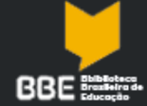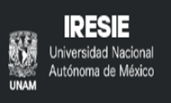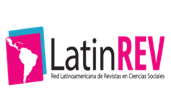The transformation of the teacher's work
co-analysis of teachers’ activities during the covid-19 pandemic through the clinic of activity
DOI:
https://doi.org/10.35699/2238-037X.2022.37519Keywords:
Clinic of activity, Instruction to the Double, Teacher's work, Environmental sciences, COVID-19 pandemicAbstract
The reflection and mutual analysis with the faculty about their work is essential for the maintenance of the health and production of these subjects, transforming itself in the strengthening of the collectives and in the improvement of the dynamic teaching process. Thinking about such issues, this research had as theoretical and methodological reference the concepts of work ergonomics and the Clinic of activity developed by Yves Clot (2005, 2007, 2010a, 2010b, 2017) and Daniel Faïta (2002, 2004), being the method used the Instruction to the Double (ODDONE, 2008; CLOT, 1999, 2007, 2010; ROGER, 2007, 2013). The objective was to co-analyze the activity and the transformations of the teachers' activity under the eyes of the workers themselves during the suspension period of in-person classes due to the COVID-19 pandemic. Through the analyzes, we demonstrated that the teachers participating in the research found the occurrence of adaptations and replacements in the work organization after the suspension of the face-to-face classes, in order to transform the teaching activity during the pandemic remote education. Several reasons led to the transformations, with interaction being the most cited theme during the discussions, either as a source of impediments and/or overcoming the prescribed and planned works, subdivided into: human interactions as well as didacticpedagogical, and didactic-technological promoting workers' health and also as psychological learning tools. Regarding human interactions, we identified that, although both networks have adhered to remote education, in general and unlike the private sector, teachers from the municipal and state public systems have not had synchronous communication with their students, resulting in little or no interaction with them and the other members of the school community. We observed in the didactic-pedagogical interactions that there were adaptations of the plans by the teachers of the private system and exchanges and/or deletions of the plans for teachers of the public network. In didactic-technological interactions, there were transformations both in material artifacts, through the mandatory use of digital media, and in symbolic artifacts, with the transformation inversely proportional to the superior frequency with which the prescriptions were replaced and the shorter time teachers had to rework them. We identified an increase in the frequency of changes in prescriptions and the consequent decrease in previous interaction with them. In addition, an increase in bureaucratic tasks and a decrease in the necessary time of interaction for learning the new didactic-technological instruments reported as the main interactions that decrease the teachers' power to act; while the contact with work groups makes it possible to increase the power to act and, consequently, promoting the faculty members health. The interactions acted as psychological instruments mainly through work groups, which became spaces for collective and individual formation or self-training. Due to the lack of time to complete the implementation and implement faculty processes, we found that teachers throughout the pandemic remote education carried out “regulatory activities” (LIMA, 2010, 2016) or, as we specified for this professional genre, regulatory teaching activities.
Downloads
Published
How to Cite
Issue
Section
License
Copyright (c) 2022 Trabalho & Educação

This work is licensed under a Creative Commons Attribution 4.0 International License.
Os autores têm autorização para assumir contratos adicionais separadamente, para distribuição não-exclusiva da versão do trabalho publicada nesta revista (ex.: publicar em repositório institucional ou como capítulo de livro), com reconhecimento de autoria e publicação inicial nesta revista.












